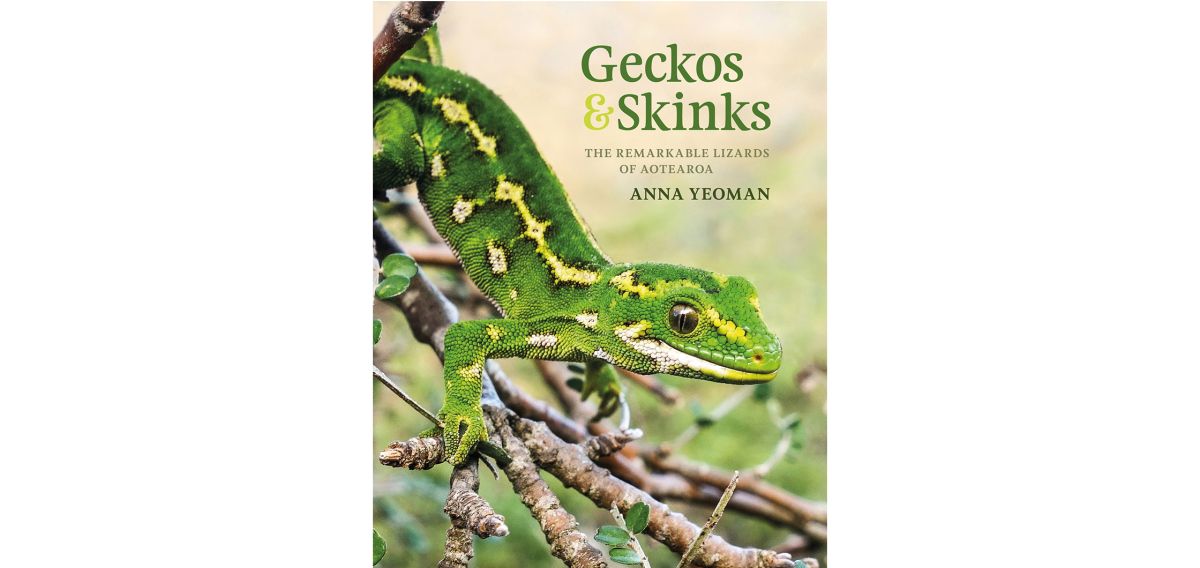
Geckos and Skinks: The Remarkable Lizards of Aotearoa - Book Review
Geckos and Skinks: The Remarkable Lizards of Aotearoa by Anna Yeoman
Review by Felicity Thomas
As a child I was enthralled by a ring bound folder we had of ‘WildLife Fact-Files’. I would sit on the floor, thumb through the A4 style pamphlets, and marvel at the remarkable animals from faraway lands. I was filled with curiosity and awe learning about these exotic creatures.
When I first picked up Geckos and Skinks by Anna Yeomann, I was transported back 25+years. Immediately, the superb photography caught my eye as I flicked through the pages. The striking colours, patterns and textures of the lizards drew me in. Who knew about these gorgeous little creatures that lived among us and how had I not noticed them before?
My only firsthand experience with lizards in Aotearoa is of tiny shadows scuttling away after my footsteps have disturbed their afternoon sunbathing on a rocky slope. Until reading Geckos and Skinks, I had no appreciation for just how diverse and unique the 125 known species of lizard in New Zealand really are.
I say “known species”, because the book is full of delightful examples of lizards being discovered—or in many cases rediscovered—after not being sighted for over half a century. Potentially, there are still species of gecko or skink undiscovered in Aotearoa, these creatures live in such remote places and have adapted to suit almost every kind of niche. They are also experts at camouflage and hiding—the best way to avoid bird predation is to be out of sight.
As the book explains, before the introduction of mammalian predators, geckos and skinks would have thrived in large numbers through out the country. Due to their energy needs as an ‘ectotherm’ (the modern term for cold blooded) being one-tenth that of a mammal, the lizards can live in dense proximity, but still have ample resources. They have also evolved to be an important part of native ecosystems, pollinating native plants like pohutukawa and coprosma.
Anna Yeoman does an excellent job of balancing the good news with the bad news throughout the book. The stories are two parts uplifting, detailing the many ways in which Aotearoa’s geckos and skinks are unique, including their ability to survive much harsher climates than any other lizard species in the world and one part tragic, drawing attention to the desperate plight of many species of lizard in Aotearoa.
The dilemma faced by Aotearoa’s native bird population against foreign predators and habitat loss is well publicised and understood. However, the public awareness of lizards is much, much lower. The illegal theft and sale of lizards is another issue threatening the continued existence of some species. The rare and beautiful jewelled geckos are at greatest risk of poaching and herpetologists have to take extra care to not let information regarding the location of known populations get in to the public eye.
Championing something as elusive and introverted as a lizard—without giving too much information away about how or where to find them—is complex. But the book highlights how many lizard species are as, if not more, endangered than many of our native birds and suffer worse from introduced predators. In particular mice, who viciously attack lizards and even manage to wiggle their way behind predator proof fences.
Anna’s writing is engaging and her immense passion for lizards’ shines through. It’s the sort of book you pick up out of curiosity to flick through—only to find yourself four chapters deep an hour later. She does a great job of taking what could be a very dry biology book and making it understandable and relatable to an ordinary New Zealander.
I am already looking forward to my next summer hike up the local peak where I have disturbed lizards in the past. This time though, I plan to stop and take a time to soak up the sun with them.
